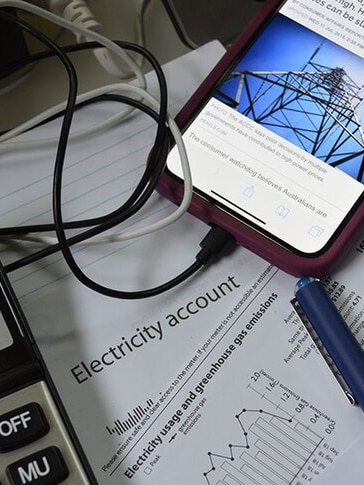Embattled electricity consumers are set for modest relief after energy regulators cut benchmark power prices in most states.
Amid news that New South Wales would extend the life of the Eraring coal-fired power plant to help keep a lid on prices, the Australian Energy Regulator (AER) handed down its final decision on the so-called default market offers (DMO) that could apply from mid-year.
While benchmark prices for households in NSW and South Australia would ease by up to 1.1 per cent and 2.8 per cent, respectively, they would rise by up to 4.2 per cent in parts of Queensland.
The decision leaves a typical bill on the default offer at up to $2,499 in NSW, $2,052 in Queensland, and $2,216 in South Australia.
Victoria’s Essential Services Commission also revealed price cuts, saying it would reduce that state’s default offers by 6 per cent for households and seven per cent for small businesses.
The savings amounts to $100 a year for residential customers, and $260 a year for small business users.
Customers with “controlled loads,” such as hot water heaters, could see slightly bigger falls in South Australia and NSW, or marginally smaller rises in Queensland.
Most households ‘better off’
Explaining the AER’s decision, chair Clare Savage said the watchdog had tried to put the protection of consumers first when setting prices for the next financial year.
Ms Savage said the regulator had taken into account falls of up to 21 per cent in the wholesale price of electricity since releasing its draft decision in March.
Similarly, she said the AER had denied retailers “an additional competition allowance” they had been chasing.
Offsetting these measures, however, were increases in the costs of the poles and wires, which can account for up to 50 per cent of a customer’s bill.
Driving that increase were rising inflation and interest rates, while the companies that owned and operated the poles-and-wires networks were given top-ups for “under-recovery of revenue in previous years.”
At the same time, Ms Savage noted that costs associated with expanding the network for the energy transition were starting to wash through to consumers.
“The easing in wholesale prices has been offset by the pressures currently observed in the poles and wires — network prices,” Ms Savage said.
According to Ms Savage, most households on the default rate would be better off under the AER’s latest decision.
She noted that even though benchmark prices were set to rise in Queensland, rebates of $1,000 in that state, together with $300 handouts from the Commonwealth, meant most people would still be ahead.
What’s more, although the DMO was seen as a key reference for other prices in the market, it only directly applied to 8 or 9 per cent of customers.
Ms Savage said the offer was designed as a safety net, and consumers should always shop around.
“We know and understand that cost-of-living pressures are front of mind for many households and small businesses, and we will continue to protect customers from unjustifiably high prices.
“If you’re struggling to pay your bills, contact your retailer as soon as possible because under national energy laws, they must assist you.
“Your retailer is also required to tell you on the front page of your bill, at least every 100 days, if they can offer you a better deal.
“Most retailers have cheaper deals than the standing offer, so shopping around remains the best way to get the best price.”
Under the AER’s decision, benchmark prices for small businesses will fall by up to 8.8 per cent in South Australia.
Posted , updated





